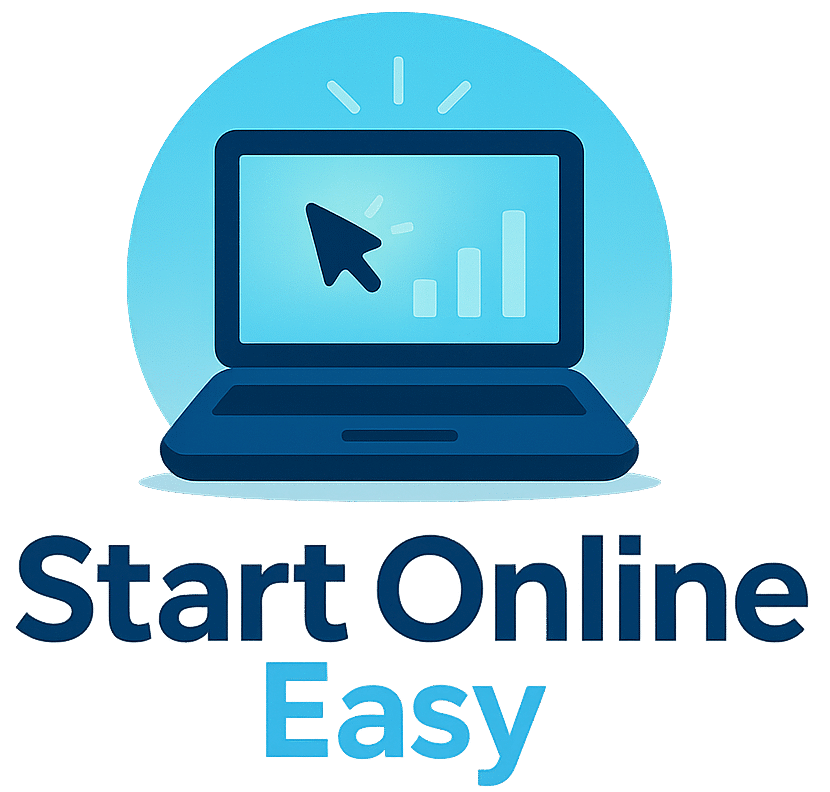Email marketing is one of those tools I keep coming back to whenever I want to boost affiliate sales. It has this unique skill for building trust and keeping people interested over time. There’s more to it than just blasting out links, though. Crafting a smart strategy takes patience and a little creativity, but once things start moving, the results can be exciting. This guide covers some practical tips to help affiliate marketers boost their email campaigns and avoid some common mistakes along the way.

Email Marketing for Affiliate Marketers: Why It’s Worth Your Time
If you’ve spent any time in affiliate marketing circles, you’ve probably heard the phrase, “the money is in the list.” For me, email marketing isn’t just about broadcasting offers. It’s a way to actually connect with people who care about the same stuff I do. Over 4 billion people use email globally, and unlike social platforms where algorithms seem to change weekly, email gives you direct access to someone’s inbox, just about whenever you need it. That means you get a lot more control over how, and when, you reach your audience.
Email marketing works with almost every affiliate niche. Whether you’re reviewing the latest gadgets, sharing health tips, or breaking down investment trends, your email list grows into a loyal group of fans who trust your opinion. According to Statista, hundreds of billions of emails are sent every day. Cutting through that noise takes effort, but when it clicks, you get results that social posts just can’t match.
On top of all this, email marketing is cost effective. Compared to running paid ads or spending hours making content for platforms you don’t own, building an email list pays off for the long term. Plus, with an email list, you don’t have to worry as much about sudden changes to social algorithms or ad rules. You own your list, and that brings freedom others don’t have.
Getting Set Up For Email Marketing Success
Building a strong email list isn’t just about tossing a signup form at the bottom of your blog and hoping for the best. It helps to start with a plan and a few basic tools. Here are some key steps for getting your foundation right:
- Pick the Right Email Marketing Platform: Tools like MailerLite, ConvertKit, or GetResponse keep things easy and budget friendly for beginners. They let you automate campaigns, set up signup forms, and even segment your list as it grows.
- Create a Lead Magnet People Actually Want: Whether it’s a cheat sheet, a checklist, or a minicourse, your signup offer should feel useful, not spammy. Focus on solving a small but real problem for your audience. This way, you attract folks who are genuinely interested in what you share.
- Design Eye Catching, Simple Forms: Keep your signup forms short; just ask for a first name and email address. A complicated form can scare people away faster than you’d expect.
- Set Up a Welcome Sequence: Don’t leave new subscribers hanging. A short sequence (a welcome note, then a couple of helpful emails) makes people feel valued and gets them used to hearing from you.
With these basics ironed out, you’ve got a foundation to build real relationships without coming off as another pushy internet stranger. You may also want to think on setting expectations right away. Let folks know how often they’ll hear from you and what kinds of emails they’ll receive. This builds trust early on.
Building Your List: Tactics That Actually Work
No matter how good your emails are, you need an audience on the other end to see them. Growing your email list takes smart tactics. Here’s what’s worked well for me (and what I see top affiliates doing regularly):
- Add Signup Offers Throughout Your Website: Put forms at the top of your site, in blog posts, and as an exit popup. Testing different placements is worth it to see what works best for your readers.
- Offer Content Upgrades: These are bonus files or guides related to a specific post or topic. For example, if your post is about “Best Healthy Snacks,” offer a printable snack planner as an opt in.
- Run Giveaways or Challenges: Hosting a free challenge or small giveaway can supercharge signups, just make sure your prize is relevant so your list doesn’t fill up with freebie hunters who’ll never buy.
- Leverage Social Platforms: Share your signup link on Instagram, Twitter, or Facebook. Short posts with a quick call to action can nudge followers onto your email list.
Focusing on genuine value over gimmicks really pays off in the long run. It’s not about having the biggest list, but building one filled with people who care about your recommendations. You can also give a boost to your growth with guest posting or partnering with other affiliates to swap audience spots in newsletters. Every little bit helps you find your ideal readers.
Creating Emails People Want to Open (and Read!)
Once someone joins your list, it’s up to your emails to keep them interested. Nobody loves spammy, sales only messages every day. I aim for a mix of useful tips, honest stories, and well placed affiliate offers. Here are a few things I always keep in mind:
- Spend Extra Time on Subject Lines: If your subject line doesn’t grab attention, the rest of your message won’t matter. Avoid clickbait, but don’t be afraid to add a little personality, curiosity, or urgency. For example, “5 Quick Fixes for Stubborn Back Pain” or “You’re On My Early Bird List. Don’t Miss This.”
- Keep Messages Clear & Scannable: Use short paragraphs, bullet points, and bold text to break things up. Most people read on their phone, so shorter is usually better.
- Offer Real Value Before Asking for Sales: Teach something useful, share a quick personal story, or pass on a resource before sharing your affiliate link. If I solve a small problem first, people are a lot more likely to check out what I recommend afterward.
- Be Upfront About Affiliate Links: I always let readers know if a link is an affiliate one. It helps build trust and keeps everything above board (plus, it’s required by law in many areas).
Email marketing is about creating the kind of messages you’d want to open. Mix things up with different formats, like short stories, quick tips, or small video snippets—whatever feels natural for your style. Feel free to ask questions in your emails too. Simple polls or a quick reply request can boost engagement and show subscribers you care about their opinions.
Overcoming Common Challenges in Affiliate Email Marketing
Like most things in online business, some hurdles pop up with email marketing for affiliates. Here’s a look at a few I’ve dealt with and some realistic fixes:
- Low Open Rates: If you see open rates tanking, it helps to tweak your subject lines, send from a real name (not a company), and trim inactive subscribers from time to time.
- Sender Reputation & Spam Traps: Using spammy words (“urgent deal!!!”) or sending too frequently can get you flagged as spam. Always use double opt ins and make it easy for people to unsubscribe if they want out.
- Balance Content and Ads: If every email is just another pitch, people will tune out. I use a simple rule: three to four helpful or personal emails for every one with a straight offer.
- Compliance & Privacy Issues: Rules like GDPR and CAN-SPAM matter. Always get explicit permission before emailing people, include a real address, and honor unsubscribe requests quickly.
Staying consistent with helpful content and respecting privacy keeps your sender reputation healthy while also helping your list stick around for the long haul. Remember, it’s fine to make mistakes as long as you learn from them and stay authentic.
Subject Lines That Spark Curiosity
Coming up with subject lines might sound simple, but a strong opener can make or break your campaigns. I try to avoid anything too generic, like “Newsletter #14” or “Great Deals Inside.” Instead, I like to experiment with questions, scarcity, or a little mystery. Some styles that have scored my best open rates include:
- “Is This Affiliate Hack Still Worth Using in 2024?”
- “Real Results From My Latest Campaign (Screenshots)”
- “Your Invite Is About to Expire”
- “3 Mistakes I Wish I Avoided as a New Affiliate”
Tools like CoSchedule’s free Headline Analyzer can help you test out ideas before sending them to everyone on your list.
Best Practices for Affiliate Email Campaigns
Several small touches can really make affiliate emails stand out. Here’s a short list I keep handy when putting campaigns together:
- Segment Your List: Not everyone will be interested in the same type of products. Segment by interests, purchase history, or signup source where you can.
- Test and Track Everything: Most platforms show open rates, click rates, and unsubscribes. Changing just one link placement or adjusting the send time can make a noticeable difference.
- Keep Mobile in Mind: Over half of all emails are opened on smartphones. Preview your message on mobile so your beautiful design doesn’t turn into a jumbled mess.
- Be Consistent: Whether you email once a week or twice a month, keeping a regular schedule builds anticipation and trust.
- Stay Focused on Helping: Even when your main goal is earning commissions, the focus should always be on helping your subscribers solve a problem or reach a goal.
Don’t forget to tweak your strategies as you go. New tools, shifting trends, or changes in your audience can all open up new avenues for growth and higher engagement. Stay curious and keep testing to see what works for your list.
FAQs About Affiliate Email Marketing
These are some of the most common questions I get from other affiliate marketers starting out with email:
Q: How often should I email my list?
A: I’ve found that once a week works for most niches, but your audience might want more or less. Watch your unsubscribe rate; it lets you know if you’re emailing too often.
Q: Can I use affiliate links directly in my emails?
A: Some affiliate programs allow it, but others don’t (like Amazon Associates). Check the program’s policy before including direct affiliate links. If it’s not allowed, send readers to a landing page or blog post first.
Q: What’s the best way to keep my email list active?
A: Send regular, genuinely useful emails, prune inactive addresses every few months, and occasionally ask subscribers what they want to read more about.
Q: Should I use a branded sender name or my own name?
A: I almost always use my own name. People are more likely to open emails from someone they know.
Wrapping Up: Nailing Your Affiliate Email Marketing Game
Email marketing remains powerful in the affiliate toolkit because it’s personal, flexible, and scalable. With honest communication, solid value, and consistent effort, it helps you build long term income streams while serving your audience better. Start small, test often, and don’t sweat every little detail. Practice and authenticity take you far in this business, so keep showing up and refining your approach as you go.
